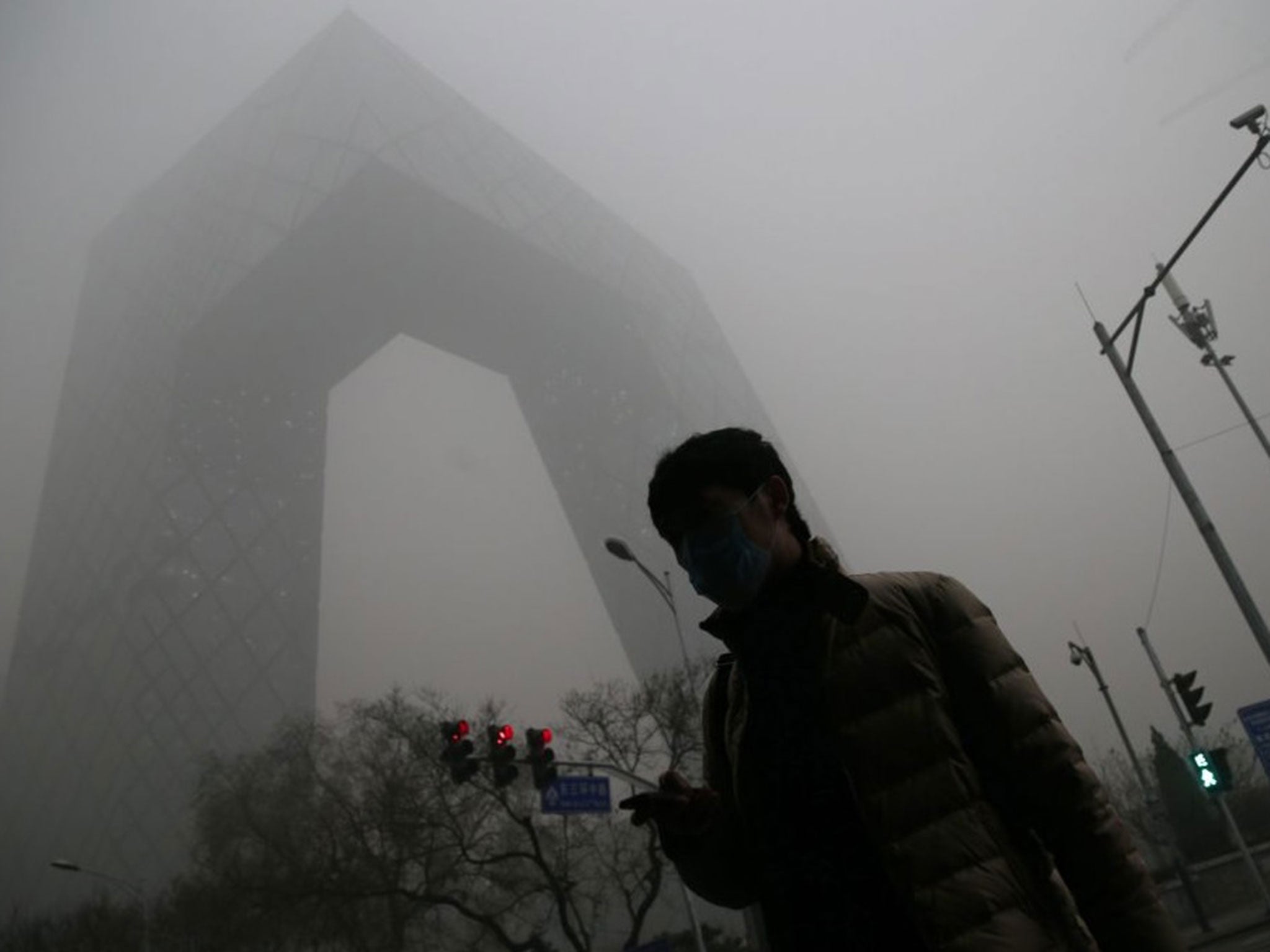Second Beijing smog 'red alert' in two weeks
China's capital city has again come to a halt due to dangerous levels of air pollution, with people advised to stay indoors

Beijing has again come to a standstill after authorities issued its second ever smog ‘red alert’ in two weeks.
A wave of smog is due to settle over the Chinese capital between tomorrow and Tuesday, with levels of the deadliest airborne particles at more than 20 times the level that is considered safe by the World Health Organisation.
The new alert follows the first of its kind that was issued last week.
Half of the city’s cars will be forced off the road, schools are due to close, and residents have been advised to stay indoors.
Barbecue grills and other outdoor smoke sources have been banned and factory production restricted.
Visibility in the city - which has a population of 22.5 million - is expected to fall to less than 500 metres on Tuesday, when the smog will be at its worst, according to the city government’s website.
An almost complete lack of wind will contribute to the smog’s lingering over the city, it said.
The National Meteorological Centre said the smog would stretch from Xian, home to the world-famous Terracotta Warriors, across part of central China, through Beijing and up into Shenyang and Harbin in China’s frigid northeast.
Smog ‘red alerts’ are triggered when levels of PM 2.5 above 300 are forecast to last for more than 72 hours.
PM, or particle matter, is the term used for particles found in the air, including dust, dirt, soot, smoke and liquid droplets.
Ahead of the first alert last week, Beijing had already been in a state of orange alert, meaning that some construction and industrial output had been curbed.
It had also issued a ruling which said cars with odd and even number plates would be stopped from driving on alternate days.
Much of the city’s pollution is blamed on coal-fired power plants, along with vehicle emissions, building construction and factory work – the result of three decades of economic expansion in the capital city.
The world’s biggest carbon emitter, China has said it plans to reduce emissions from coal-fired power plants by 50 per cent over the next five years, and that its overall emissions will peak by about 2030 before starting to decline.
China still depends on coal for more than 60 per cent of its electricity, but is in the process of shifting to nuclear, solar and wind power.
Global climate talks in Paris earlier this month focused on reaching an agreement for an international move away from fossil-fuel-driven economies within decades in a bid to arrest global warming.
Additional reporting by the Associated Press and Reuters
Join our commenting forum
Join thought-provoking conversations, follow other Independent readers and see their replies
Comments
Bookmark popover
Removed from bookmarks